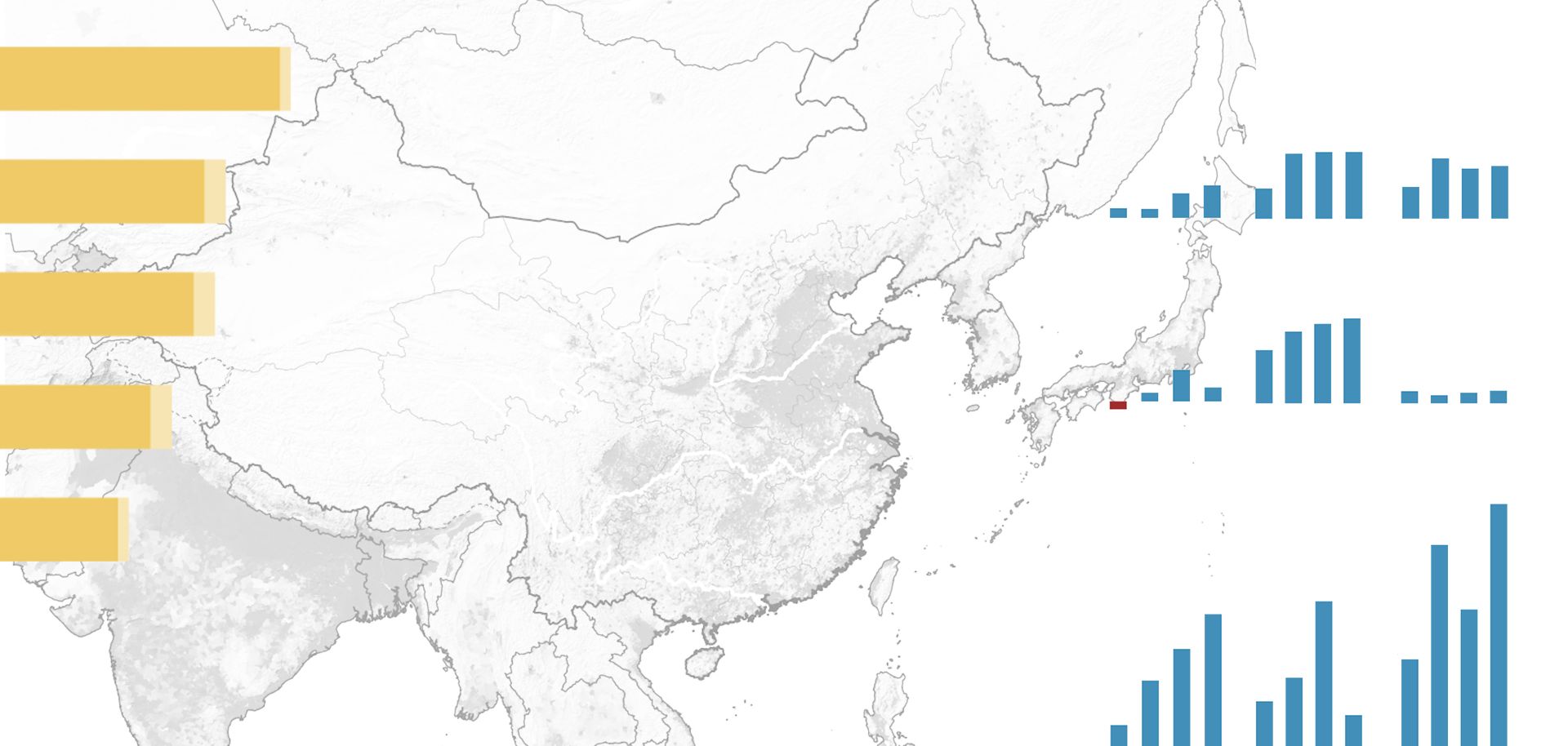
Despite its small size, Sri Lanka holds substantial strategic value by virtue of its geographic position: It is at the center of Asia's busiest maritime routes and has a wealth of natural deep harbors. Over the years, the country has attracted the interest of nearby India, which intervened periodically in Sri Lanka's civil war, brokering a peace deal in 1987 and dispatching troops to enforce it. But the civil war also afforded India's regional competitor, China, the opportunity to establish a footprint on the island nation. In 2005, when India left Colombo to deal with the conflict on its own, Beijing stepped in and offered the Sri Lankan military $1 billion in aid. China continued to lend the country financial assistance even after the war's end, providing loans for development projects such as hydropower dams, roads and port infrastructure. Today, the Sri Lankan government owes Beijing $8 billion, more than 12 percent of its total $64.9 billion debt.
Much of the current political tumult in Sri Lanka stems from China's growing influence in the country. On Jan. 8, 52 people were arrested after protests broke out at a ceremony marking the first brick laid at the Hambantota Industrial Zone, a 6,000-hectare (15,000-acre) industrial park near southern Sri Lanka's Hambantota port. At the same time as the Hambantota demonstration, members of the Ceylon Ports General Employees Union staged sympathy protests at the ports of Galle and Colombo. Choosing his moment carefully, former President Mahinda Rajapaksa called for a meeting with China's ambassador to Sri Lanka to discuss concerns about the project, an initiative Rajapaksa himself proposed while in office. Members of the opposition object to the terms of the original agreement, which offers China Merchants Port Holdings Co. Ltd. a 99-year lease on the industrial park in exchange for granting Sri Lanka $1.1 billion in debt relief. (Activists have described the project as the beginning of a "Chinese colony" on the island.)
In the wake of the protests, the Sri Lankan government deferred signing the agreement, much to Beijing's dismay. This is not the first time China has weathered a political firestorm sparked by its development projects in Sri Lanka. In March 2015, the $1.4 billion Colombo Port City project came under criticism in Sri Lanka for appearing to grant the Chinese military potential control of the country's airspace. After repeated delays, the Sri Lankan government finally gave the go-ahead to resume construction on the project, now known as the "Financial City," in March 2016. The Chinese government struck both deals when Rajapaksa had a tight hold on power. Since his defeat in 2015, the projects have become a source of contention between the current administration and Rajapaksa's supporters in the opposition. The disarray will continue to cause headaches for China, which has invested heavily in these strategic and lucrative development projects.



